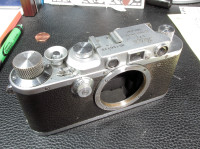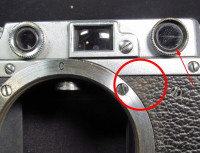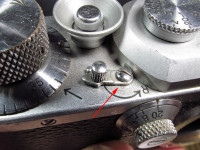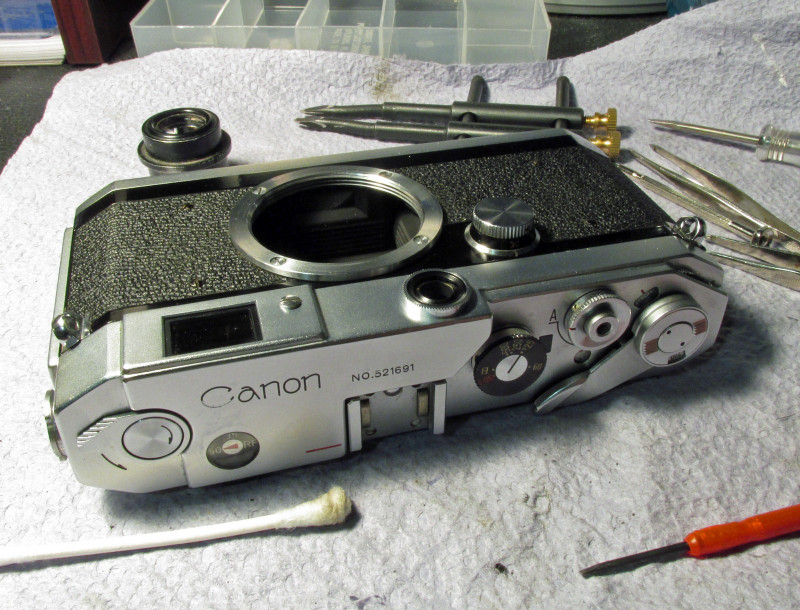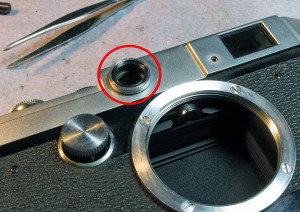Giving my 1936 Leica IIIa a CLA. It basically works fine, the shutter fires on all speeds but the slow speeds are sluggish. The curtains have previously been changed, maybe even twice in it’s 78 year history and look good. Overall there is brassing on the top and bottom plates but from normal heavy usage telling me it was well loved. From what I can see, the inside looks clean-ish, no major rust or anything like that.
Above, showing the external condition, dirt and a reddish oxidation to the Vulcanite (red circle) and dirty internal glass.
